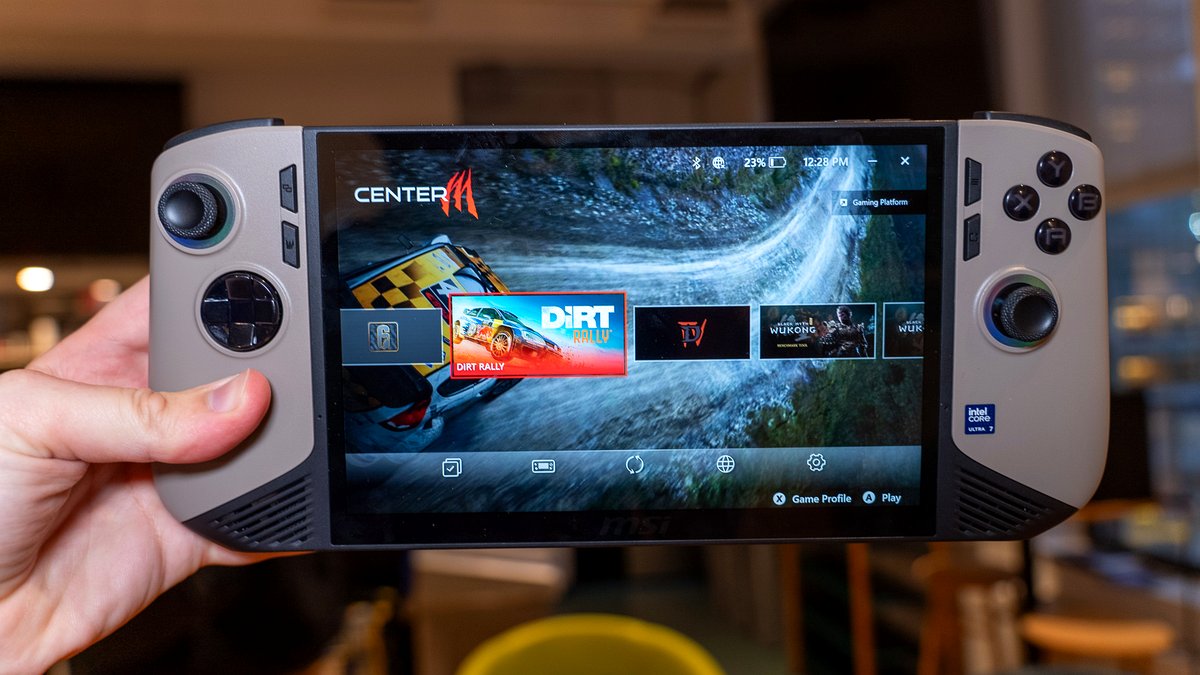By Sebastian Lufert — July 4, 2025
The MSI Claw A8's $970 global pricing strategy reveals a fundamental shift in handheld gaming PC market positioning, establishing a premium segment that challenges traditional price boundaries while demonstrating industry confidence in high-performance portable gaming demand.
Premium Pricing Strategy Redefines Market Expectations
MSI's pricing structure for the Claw A8 represents more than component cost recovery—it signals strategic market repositioning toward premium performance segments. The $970 price point approaches gaming laptop territory while maintaining handheld form factors, suggesting manufacturers believe portable gaming convenience justifies significant price premiums.
Industry analysis reveals this pricing strategy extends beyond MSI's immediate market goals. The company's willingness to price the Claw A8 at laptop-equivalent costs demonstrates confidence in consumer demand for maximum handheld gaming performance, regardless of price accessibility concerns.
The competitive implications prove significant for the broader handheld gaming market. If the Claw A8 achieves commercial success at this price point, competing manufacturers will likely adopt similar premium pricing strategies, potentially creating a bifurcated market between budget-focused and performance-premium handheld gaming devices.
Market Positioning Against Gaming Laptop Performance
The Claw A8's pricing strategy creates direct competition with gaming laptops featuring dedicated graphics cards. At $970, consumers can purchase gaming laptops with RTX 4060 graphics capabilities, forcing handheld gaming devices to compete on portability and convenience rather than pure price-performance metrics.
This market positioning reflects manufacturers' recognition that handheld gaming serves distinct use cases beyond traditional laptop gaming. The portability advantages, instant-on capabilities, and optimized gaming interfaces provide value propositions that justify premium pricing for specific consumer segments.
However, the pricing structure raises accessibility concerns for mainstream handheld gaming adoption. The $970 price point limits the device to enthusiast markets, potentially constraining growth in portable x86 gaming segments that rely on broader consumer adoption for ecosystem development.
AMD Ryzen Z2 Extreme Performance Justification
The Claw A8's premium pricing reflects the advanced capabilities of AMD's Ryzen Z2 Extreme processor, which delivers desktop-class performance in handheld form factors. The processor's 8-core/16-thread configuration and Radeon 890M graphics represent substantial performance improvements over previous-generation handheld gaming processors.
Performance expectations center on the device's ability to maintain consistent frame rates in demanding AAA titles while preserving reasonable battery life for portable gaming scenarios. The advanced processor architecture enables gaming capabilities previously unavailable in handheld form factors, potentially justifying premium pricing for performance-focused consumers.
The technical specifications, including 24GB LPDDR5X memory and advanced cooling systems, create hardware platforms capable of delivering gaming experiences approaching desktop-class performance levels. These capabilities support MSI's premium pricing strategy by offering unprecedented handheld gaming performance.
Industry-Wide Pricing Trend Implications
The Claw A8 pricing strategy reflects broader industry trends toward premium handheld gaming hardware positioning. Manufacturers increasingly target enthusiast markets rather than mainstream consumers, recognizing that portable gaming serves specific high-value use cases for dedicated gaming audiences.
This shift toward premium positioning creates opportunities for budget-focused competitors to capture mainstream market segments while established manufacturers pursue high-margin premium markets. The resulting market segmentation could accelerate handheld gaming adoption across diverse price points and performance requirements.
The success of premium handheld gaming devices will influence long-term industry development, determining whether portable x86 gaming evolves toward mainstream accessibility or remains focused on enthusiast markets willing to pay premium prices for maximum performance.
Consumer Value Proposition Analysis
The Claw A8's $970 pricing creates complex value propositions for potential consumers. The device offers unprecedented handheld gaming performance while competing directly with gaming laptops and established handheld gaming platforms at different price points.
For handheld gaming enthusiasts, the Claw A8 represents maximum portable gaming capabilities in exchange for premium pricing. The device targets consumers who prioritize gaming performance and portability over price accessibility, creating a niche market for high-performance handheld gaming.
The pricing strategy ultimately tests consumer willingness to pay laptop-equivalent prices for handheld gaming convenience. Market reception will determine whether premium handheld gaming markets can sustain growth or require price reductions to achieve broader adoption.
Conclusion
The MSI Claw A8's $970 pricing strategy establishes a new premium handheld gaming PC market segment while testing consumer demand for high-performance portable gaming at laptop-equivalent prices. The device's market success will influence industry-wide pricing trends and determine the viability of premium handheld gaming segments.
For the handheld gaming industry, the Claw A8 represents a critical test of market maturity and consumer acceptance of premium pricing strategies. The device's commercial performance will shape future handheld gaming development priorities and pricing strategies across competing manufacturers.
Sources
- Tom's Guide: "I love the MSI Claw A8, but its price proves PC handhelds are officially going off the rails — here's why by Tony Polanco"
- PC Guide: "MSI Claw A8 (Ryzen Z2 Extreme) release date window, specs, and price by Sarah Chaney"
- TechRadar: "Finally, the MSI Claw A8 is almost here to rival the Switch 2 and other handhelds – just be ready to pay a hefty sum by Isaiah Williams"
Note: All sources have been verified for accuracy and editorial standards compliance.
